Harike Wetland
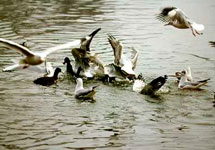
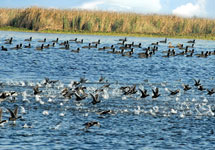
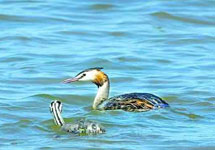
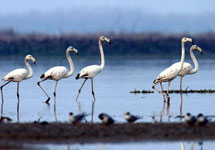
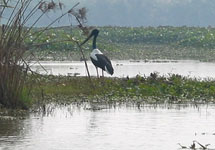
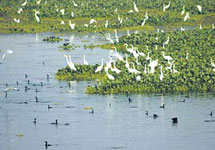



Harike is one of the most important Wild Life Sanctuaries of not Only Punjab but also of India being recognized throughout the world. Situated on the confluence of the river Beas and Sutlez at the Ferozepur and Amritsar border the sanctuary encompass an area of approximately 86 sq km. The area was declared as a Wild Life Sanctuary in 1999 and because of its importance as a wetland of international stature, it was declared a Ramsar site by the International Body of Wetlands under the UNDP in 1990.
The sanctuary is a bird watchers paradise and attracts thousands of migratory birds during winter, some from as far off as Siberia and the Arctic. It is a refuge for a large number of resident and migratory birds. Some 45,000 ducks have been recorded here during the peak migratory season. The wigeon, common teal, pintail, shoveller and brahminy ducks are commonly seen during the winter. The lake is particularly famous for diving ducks, such as the crested pochard, common pochard and tufted ducks which occur in very large numbers. Around 375 bird species have been recorded; 40 species were long distance migrants which pass through or winter at Harikelake. Apart from avifauna, some 7 species of turtle and 26 species of fish have been recorded. The mammals found at Harike include the smooth Indian otter, the jungle cat, jackal, Indian wild boar and the common mongoose.
The major problems facing the Sanctuary are encroachments on the wetland habitat, widespread infestation of water hyacinth weed which is slowly chocking the system and reducing the available surface area, siltation and the resultant fall in the volume of water, drainage of untreated and toxic industrial effluents into the system from big cities like Ludhiana ,Jallandhar and Kapurthala, illegal fishing and poaching of birds etc.
The wetland inhabits a number of rare and jeopardized faunal species, such as testudine, turtle and the smooth Indian otter. One can also witness diving ducks, scaup duck, falcated teal, whiteheaded stifftailed duck, spot jungle cat, mongoose, jackal and Indian wild boar —rarely seen elsewhere in India—can be spotted here.
The wetland consists of rich vegetation such as Eichhornia crassipes, Azolla sp, lotus, Ipomoea aquatica, Najas, Hydrilla, Ceratophyllum, Potamogeton, Vallisneria, Charales, and much more. There are 26 species of fish that are recorded including Rohu, Catla, Puntius, Cirrhina Channa, Mystus, Notopterus ornata, Cyprinus, and Ambassis ranga. Recently, Indus dolphin (Platanista gangetica minor), which was supposed to have become extinct in India after 1930 was also spotted in the Beas River in Harike wetland area.
The variety of fauna includes Cotton Pygmy Goose, Tifted Duck, Yellow crowned Woodpecker, Yellow eyed Pigeon, Watercock, Pallass Gull, Brown headed Gull , Black headed Gull, Yellow legged Gull, Indian Skimmer, White winged Tern, White rumped Vulture, Hen Harrier, Eurasian Sparrowhawk, Eurasian Hobby, Horned Grebe, Black necked Grebe, Great Crested Grebe, White browed Fantail, Brown Shrike, Common Woodshrike, White tailed Stonechat, White crowned Penduline Tit, Rufous vented Prinia, Striated Grassbird, Cettis Bush Warbler, the Sulphur bellied Warbler and Diving duck…to name a few.
Tourist Places in Punjab
About Punjab
Main Links
Travel Information
Exploring Punjab - Vacations
Punjab's Forestry and Wildlife
The Unique eco-system of the Shivaliks is spread over a geographical area 9448.97 Sq. km, and lies in the north-eatern part of the state extending from north-west to south-east along the Himachal Pradesh Border. It is spread across the eastern part of the districts of Gurdaspur, Hoshiarpur, Shaheed Bhagat Singh Nagar and Rupnagar


